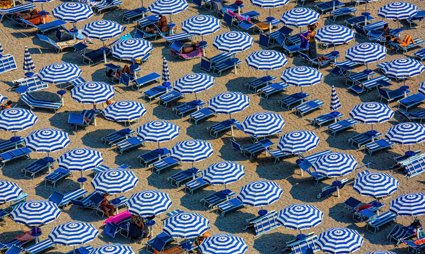
The water cycle
Overview
In this series of activities children will be using what they have learnt earlier about evaporation, condensation and reversible changes of state, to build up the water cycle from first principles.
The slides and the water cycle experiment will provide opportunities for children to extend their knowledge and to ask questions.
The practical activities will allow children to demonstrate their learning in a fun and creative way.
Objectives
Children should learn:
-
that water evaporates from oceans, seas and lakes, condenses as clouds and eventually
-
falls as rain.
-
that water collects in streams and rivers and eventually finds its way to the sea
-
that evaporation and condensation are processes that can be reversed
-
to interpret the water cycle in terms of the processes involved
Activity one
Water cycle animation
Begin by showing the children the first two screens. Children can then think about the water supply in pairs using photos displayed (screen two) as prompts. Encourage discussion about the water cycle, using earlier work on evaporation and condensation.
Use the rest of the animation to show the water cycle processes in sequence.
You will need:
Activity two
Water cycle in a bag experiment
-
Take the large bowl and fill it with several centimetres of water.
-
Place your small pot in the centre of the bowl of water, making sure not to get any water inside it.
-
Cover the large bowl with clingfilm and fasten this down securely to the side of the bowl.
-
Put a weight on top of the clingfilm, over the centre of the small pot to push the clingfilm down into it slightly.
-
Place your experiment on a warm sunny window sill and leave for a few days.
You should find that the heat of the sun evaporates the water, which rises, condenses on the cool plastic, and falls into the small container. This is a small version of what happens in the real water cycle.
You will need:
-
A large bowl
-
A small yogurt pot or plastic cup
-
Clingfilm
-
Water
-
Small weight
-
Sunny window sill
Activity three
Children work in small groups to describe the water cycle in a variety of ways:
-
Designing a poster of the water cycle
-
Making a cartoon strip of the water cycle for a drop of water
-
Writing and performing a water cycle rap
-
Completing the water cycle word search
Each group shares their work with the rest of the class during plenary.
You will need:
-
Paper for posters
-
Paper for cartoon strips
-
Reference books
-
The water cycle word search
-
Word search answers
File nameFiles
File type
Size
Download
